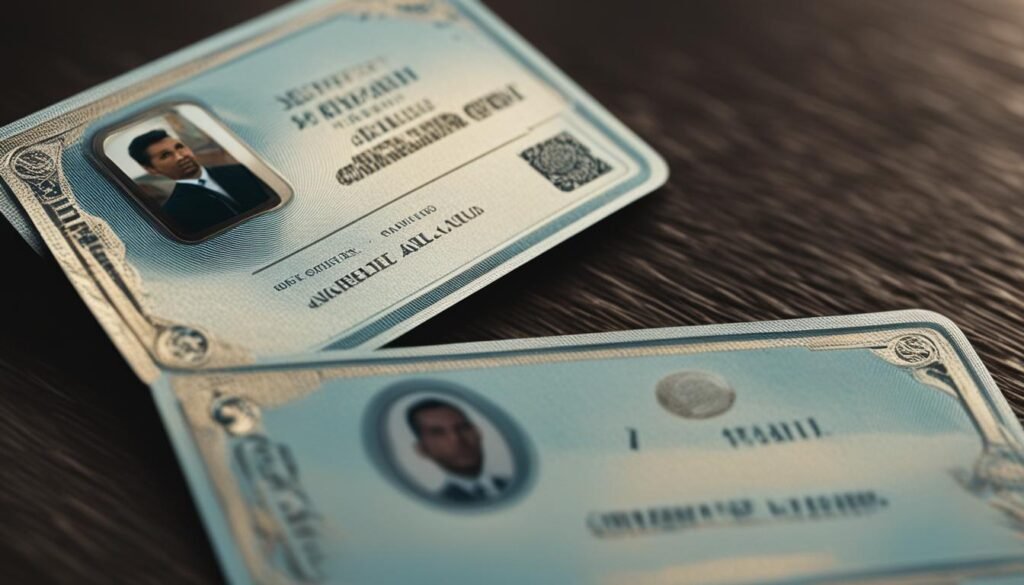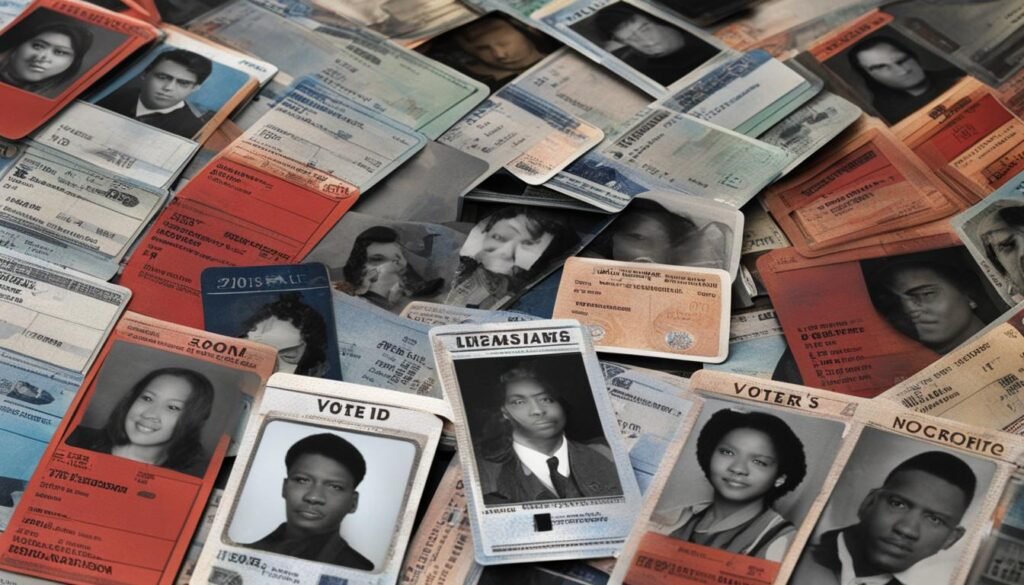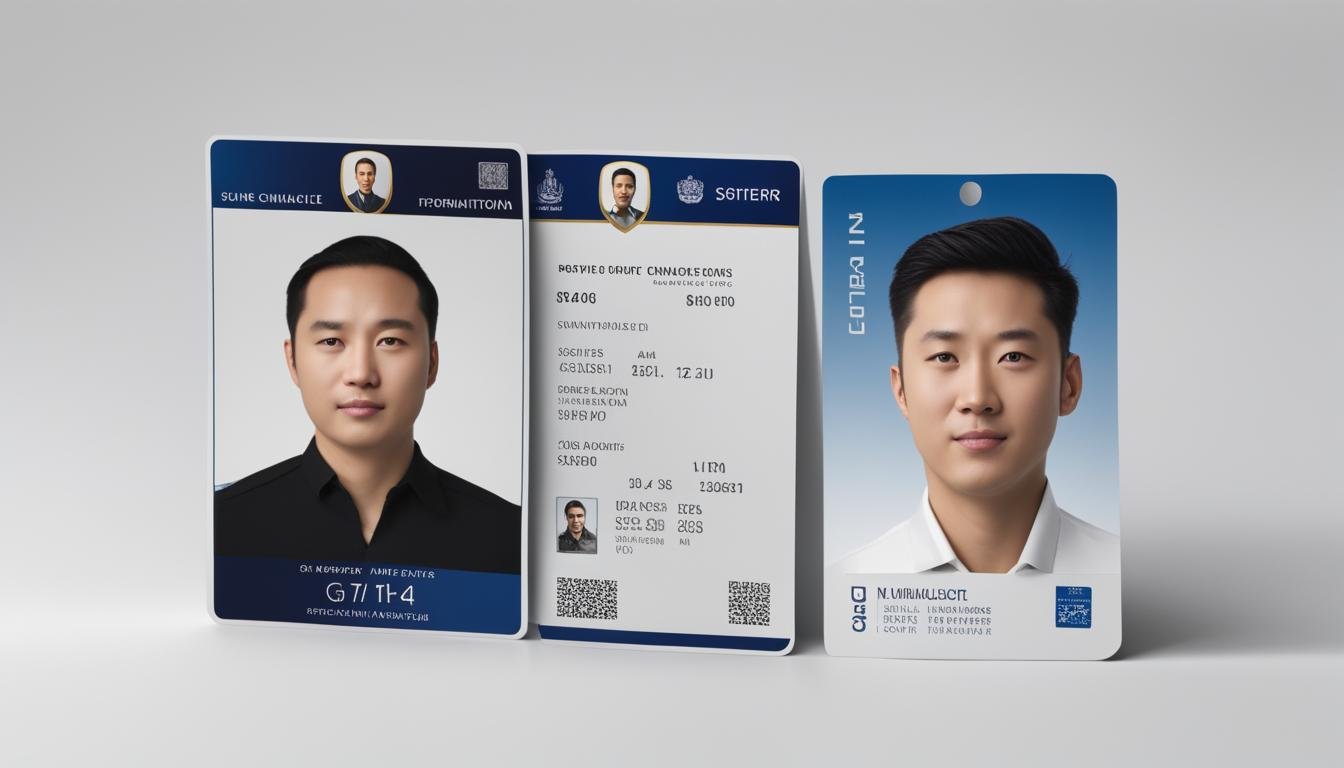Employers often ask for two forms of ID from their employees as part of the hiring process. But why is this necessary? In this article, we will explore the importance of employers requiring two forms of ID and how it benefits both the employer and the employee.
Key Takeaways:
- Requiring two forms of ID helps employers comply with legal requirements and maintain workplace security.
- It allows for thorough identity verification, reducing the risk of hiring individuals with fraudulent identities.
- Employers can ensure that employees are legally authorized to work in the United States.
- Dual ID verification provides an added layer of security for the workplace.
- Acceptable forms of identification include List A, List B, and List C documents.
Importance of Multiple ID Verification for Employers
Requiring two forms of ID is a vital practice for employers during the hiring process. It ensures thorough identity verification and helps prevent identity theft. By requesting dual identification, employers can verify that the employee’s identity aligns with the information provided in their job application, reducing the risk of fraudulent activity in the workplace.
Identity theft is a significant concern, and employers play a crucial role in preventing it. By requesting multiple forms of ID, employers can verify the authenticity of the documents presented and ensure that the employee is legally authorized to work in the United States.
This image depicts the importance of preventing identity theft, a critical aspect of multiple ID verification.
In addition to preventing identity theft, dual identification provides an added layer of security for the workplace. By accurately verifying the employee’s identity, employers can reduce the risk of unauthorized individuals gaining access to sensitive or confidential information.
“Implementing a dual ID verification process helps protect both the employer and the employees, creating a safe and secure work environment.”
Hence, dual identification is not only a legal requirement but also a necessity for employers to ensure the authenticity of employee identities and maintain workplace security.
Employee Identification and Identity Verification
Through dual identification, employers can confidently establish the identity of their employees. It allows them to verify that the individual is who they claim to be, ensuring accuracy in personnel records and maintaining compliance with government regulations.
The process also aids in identity verification by cross-referencing the documents presented with the information provided in the job application. This step further strengthens the employer’s ability to validate the employee’s identity and ensures that the right person is assigned to the correct employment records.
Preventing Identity Theft
Identity theft can have severe consequences for both individuals and organizations. Employers have a responsibility to protect their employees and clients from such risks. By requiring dual identification, employers can minimize the chances of hiring individuals who may have stolen another person’s identity.
Identity thieves often target workplaces as a means to obtain personal information or gain unauthorized access to resources. Dual ID verification acts as a preventive measure, enabling employers to confirm the authenticity of the documents provided and help mitigate the risk of identity theft.
Benefits of Multiple ID Verification
| Benefits | Description |
|---|---|
| Prevents identity theft | Verifying the authenticity of documents reduces the risk of hiring individuals with fraudulent identities. |
| Enhances workplace security | Dual identification adds an extra layer of protection, ensuring that only authorized individuals have access to sensitive information and resources. |
| Accurate employee identification | Employers can establish reliable personnel records and maintain compliance with government regulations by accurately verifying employee identities. |
| Reduces legal and financial risks | By adhering to the dual identification process, employers minimize the risk of penalties and legal consequences for hiring undocumented or unauthorized individuals. |
The table above highlights the key benefits of multiple ID verification for employers.
Legal Requirements for Two Forms of ID
When it comes to hiring regulations, employers have a legal requirement to request and verify the identity and work authorization of their employees. This obligation is outlined in the Form I-9, a crucial document used to verify the identity and employment eligibility of individuals working in the United States.
Compliance with these legal requirements is essential for employers to ensure that they are hiring individuals who are legally authorized to work in the country. By requesting two forms of ID, employers demonstrate their commitment to following the necessary protocols and safeguarding against potential penalties.
Failure to comply with these regulations can have serious consequences for employers. Penalties may range from fines to legal issues that can damage a company’s reputation and financial stability. Therefore, it is essential for employers to prioritize compliance and adhere to the legal requirement of requesting two forms of ID.
| Legal Requirement for Two Forms of ID | Compliance with Hiring Regulations | Employment Identification |
|---|---|---|
| Verifies the identity and work authorization of employees | Ensures compliance with government regulations | Establishes eligibility to work in the United States |
| Prevents the hiring of unauthorized workers | Safeguards against penalties and legal issues | Maintains a compliant workforce |
Being aware of and adhering to the legal requirement for two forms of ID is not only a matter of due diligence but also an essential step in maintaining a trustworthy and compliant workforce. By complying with these regulations, employers can protect their business and contribute to a safer and more secure workplace environment.

In conclusion, dual ID verification offers numerous benefits for employers. It serves as a risk management strategy, prevents fraud, enables effective employee screening, and ensures the verification of employee identities. By implementing this process, employers can safeguard their organizations, foster a culture of integrity, and comply with legal requirements.
Employer ID Verification Process
As part of the employment process, employers are required to conduct an ID verification to ensure the authenticity of their employees’ identities and work eligibility. This process involves requesting two forms of ID from the employee, which must be carefully examined to ensure validity and accuracy.
When conducting an employer ID verification, it is important to consider the following:
- The documents presented by the employee should be valid and unexpired.
- The documents should accurately represent the employee’s identity.
- Employers should keep records of the ID verification process to comply with document compliance requirements.
By diligently executing the employer ID verification process, employers can accurately record their employees’ identities and confirm their authorization to work in the United States.
Implementing a thorough ID verification process helps employers:
- Prevent fraudulent identities from entering the workplace.
- Maintain compliance with legal requirements.
- Ensure a secure and trustworthy work environment.
Compliance with ID verification processes is essential for employers to protect both themselves and their employees. By verifying employees’ IDs, employers avoid potential legal issues and maintain a reliable and compliant workforce.

| Benefits of Employer ID Verification | Process | Requirements |
|---|---|---|
| Prevents fraudulent identities | Request two forms of ID | Ensure documents are valid and accurately represent the employee |
| Maintains compliance with legal requirements | Thoroughly examine the documents | Keep records of the ID verification process |
| Creates a secure and trustworthy work environment |
Reasons Employers Require Two Forms of ID
There are several reasons why employers require two forms of ID. Firstly, it helps establish a reliable and accurate record of the employee’s identity, which is essential for personnel records and compliance purposes. When employers have two forms of ID, they can confidently verify the information provided by the employee and ensure that their records are accurate and up to date. This is crucial for maintaining the integrity of employee data and ensuring compliance with legal requirements.
Secondly, requesting two forms of ID allows employers to confirm the employee’s eligibility to work in the United States and comply with government regulations. By obtaining valid and acceptable identification documents, employers can verify that the employee is authorized to work and help prevent unauthorized employment.
Lastly, dual ID verification ensures that the employer is hiring individuals who are who they claim to be, reducing the risk of fraudulent activity or misrepresentation in the workplace. Identity theft and fraudulent applications can have significant negative consequences for an employer, including financial losses, reputational damage, and legal liabilities. By requesting two forms of ID, employers can mitigate these risks and ensure a trustworthy and reliable workforce.

“Requesting two forms of ID allows employers to establish a reliable record of employee identity, verify work authorization, and reduce the risk of fraudulent activity in the workplace.”
Acceptable Forms of Identification for Employers
Employers often require employees to provide two forms of identification to establish their identity and work authorization. The Form I-9 is the document used by employers to verify these details. Here is a breakdown of the acceptable forms of identification that employers can consider:
List A Documents
List A documents establish both identity and employment authorization. These are the most comprehensive forms of identification an employee can provide. Some examples of List A documents include:
- U.S. Passport
- Permanent Resident Card or Alien Registration Receipt Card (Form I-551)
- Foreign Passport with I-551 Stamp
- Employment Authorization Document (Form I-766)
List B Documents
List B documents establish identity and can be used in conjunction with List C documents to establish employment authorization. Common List B documents include:
- Driver’s License or ID Card issued by a state or outlying possession of the U.S.
- School ID card with a photograph
- Voter’s registration card
- Military dependent’s ID card
List C Documents
List C documents establish employment authorization and can be used in conjunction with List B documents to establish identity. Some examples of List C documents include:
- Social Security account number card
- Original or certified copy of a birth certificate issued by a state, county, municipal authority, or outlying possession of the U.S.
- Certification of report of birth issued by the Department of State (Form DS-1350)
- Native American tribal document
Employers should consult the Form I-9 for a comprehensive list of acceptable documents and ensure that the identification presented meets the requirements outlined by the United States Citizenship and Immigration Services (USCIS).
By requesting and verifying these acceptable forms of identification, employers can ensure that they are hiring individuals who are legally authorized to work in the United States and mitigate the risk of potential penalties or legal issues associated with employment verification.
| Document Type | Examples |
|---|---|
| List A | U.S. Passport |
| Permanent Resident Card (Form I-551) | |
| Foreign Passport with I-551 Stamp | |
| Employment Authorization Document (Form I-766) | |
| List B | Driver’s License or ID Card |
| School ID Card | |
| Voter’s Registration Card | |
| List C | Social Security Account Number Card |
| Birth Certificate | |
| Certification of Report of Birth (Form DS-1350) | |
| Native American Tribal Document |

Compliance with Two Forms of ID
Employers must prioritize compliance with company policies that require the presentation and verification of two forms of ID. These policies are designed to align with the legal requirements outlined in the Form I-9, which governs employment verification. By adhering to these policies and maintaining a compliant process for ID verification, employers can effectively mitigate the risk of penalties and legal issues.
Ensuring compliance with two forms of ID is crucial for several reasons. Firstly, it demonstrates a commitment to documentation compliance and adherence to employment regulations. By verifying the identity and work authorization of employees, employers contribute to a safer and more compliant work environment.
In addition, compliance with two forms of ID helps to establish a reliable and accurate record of employee identities. This plays a vital role in maintaining personnel records, which are essential for various employment purposes, including tax compliance, benefits administration, and background checks. By keeping thorough records, employers can demonstrate their commitment to proper documentation and due diligence.
Furthermore, staying informed about any updates or changes in the regulations regarding ID requirements is paramount. Regulations surrounding employment verification and ID compliance can evolve over time, and employers must remain vigilant to ensure ongoing compliance. Regularly reviewing and updating company policies in response to these changes helps maintain a legally sound and compliant approach to ID verification.
Employers can also consider implementing employee training programs to educate their workforce about the importance of compliance with two forms of ID. Training sessions can cover topics such as proper identification document handling, recognizing fraudulent documents, and understanding the legal implications of non-compliance.
By prioritizing compliance with two forms of ID and establishing robust company policies, employers can ensure that they are meeting legal requirements, minimizing the risk of non-compliance, and maintaining a trustworthy and compliant workforce.
Conclusion
Employers must adhere to strict requirements for identification to ensure the identity and eligibility of their employees. Requiring two forms of ID is a crucial practice that helps employers comply with legal regulations, reduces the risk of fraudulent identities, and enhances workplace security.
By implementing a thorough ID verification process, employers can create a safer and more trustworthy work environment. It not only minimizes the potential for identity theft but also protects the company from potential legal issues. Dual ID verification provides employers with the assurance that they are hiring individuals who are authorized to work in the United States.
Furthermore, the benefits of two forms of ID extend beyond compliance and security. They allow employers to maintain accurate personnel records, establish reliable employee identities, and mitigate the risk of fraudulent activities in the workplace.
FAQ
Why do employers need two forms of ID?
Employers require two forms of ID from employees to verify their identity and authorization to work. This is a legal requirement and helps employers comply with government regulations, prevent identity theft, and maintain workplace security.
What is the importance of multiple ID verification for employers?
Requiring two forms of ID allows employers to conduct thorough identity verification during the hiring process. This helps prevent identity theft and ensures that the employee’s identity matches the information provided in their job application. Employers can verify the authenticity of the documents presented and ensure that the employee is legally authorized to work in the United States. Additionally, dual identification provides an added layer of security for the workplace.
What are the legal requirements for two forms of ID?
Employers are legally required to request and verify the identity and work authorization of their employees. This requirement is outlined in the Form I-9, which is used to verify the identity and employment eligibility of employees. By requesting two forms of ID, employers demonstrate their compliance with these legal requirements and ensure that they are hiring individuals who are eligible to work in the United States. Failure to comply with these regulations can result in penalties for the employer.
What are the benefits of dual ID verification for employers?
Implementing a dual ID verification process provides several benefits for employers. It helps mitigate the risk of hiring individuals with fraudulent identities or invalid work authorization. By thoroughly screening employees’ identities, employers can reduce the likelihood of hiring individuals who may pose a security or legal risk to the company. Additionally, dual ID verification aids in fraud prevention and ensures that the company maintains a trustworthy and compliant workforce.
How does the employer ID verification process work?
The employer ID verification process involves requesting two forms of ID from the employee as part of the hiring process. The employer must carefully examine the documents presented, ensuring they are valid, unexpired, and accurately represent the employee’s identity. Employers should also keep records of the ID verification process as part of their document compliance requirements. This process helps ensure that the employee’s identity is accurately recorded and that they are authorized to work in the United States.
Why do employers require two forms of ID?
There are several reasons why employers require two forms of ID. Firstly, it helps establish a reliable and accurate record of the employee’s identity, which is essential for personnel records and compliance purposes. Secondly, it allows employers to confirm the employee’s eligibility to work in the United States and comply with government regulations. Lastly, dual ID verification ensures that the employer is hiring individuals who are who they claim to be, reducing the risk of fraudulent activity or misrepresentation in the workplace.
What are the acceptable forms of identification for employers?
Employers can accept a variety of documents as forms of identification. List A documents, such as a U.S. passport or Permanent Resident Card, establish both identity and employment authorization. List B documents, such as a driver’s license or school ID card, establish identity, while List C documents, like a Social Security account number card or employment authorization document, establish employment authorization. Employers can refer to the Form I-9 for a comprehensive list of acceptable documents.
How can employers ensure compliance with two forms of ID?
Employers must ensure that they have established company policies that require the presentation and verification of two forms of ID. These policies should be aligned with the legal requirements outlined in the Form I-9. By maintaining a compliant process for ID verification, employers reduce the risk of penalties or legal issues related to employment verification. It is important for employers to stay informed about any updates or changes in the regulations regarding ID requirements.
What are the benefits of requiring two forms of ID for employers?
Requiring two forms of ID is a crucial practice for employers to verify the identity and employment eligibility of their employees. It ensures compliance with legal requirements, reduces the risk of hiring individuals with fraudulent identities, and helps maintain workplace security. By implementing a thorough ID verification process, employers can create a safer and more trustworthy work environment while also protecting themselves from potential legal issues.
Source Links
- https://www.uscis.gov/i-9-central/form-i-9-resources/handbook-for-employers-m-274/130-acceptable-documents-for-verifying-employment-authorization-and-identity
- https://www.uscis.gov/i-9-central/form-i-9-acceptable-documents
- https://www.gsa.gov/technology/it-contract-vehicles-and-purchasing-programs/federal-credentialing-services/get-appointment-help/bring-required-documents
